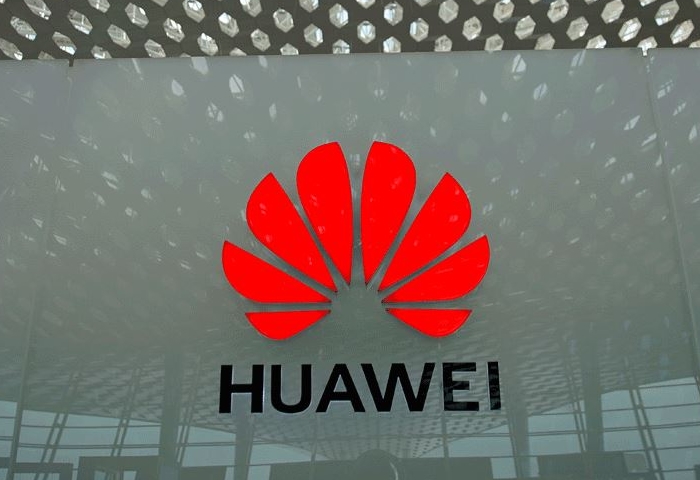5G is coming. Telecom networks need to undergo these three significant changes: introduce new spectrums and technologies, a lot of new sites, and mobile edge computing (MEC) sinking. At the same time, as 5G is applied to more industries, IT and CT will be further merged, and network infrastructure will be shared more. So where will these changes drive telecom energy?
Trend 1: Energy digitalization
Key point: 90% of sites worldwide will achieve energy digitalization.
With the advent of 5G, the number of sites increases sharply, and O&M becomes more complex. The rising OPEX will consume operators' profits. Energy digitalization is crucial to simplifying O&M and reducing site O&M costs. Thanks to digital sensing, control, and processing technologies, it is estimated that 90% of sites worldwide will have digitalized energy by 2025, making it possible for operators to build simplified, green, and autonomous driving networks.
Trend 2: Increasing the adoption of green energy
Key point: Adopting green energy promotes energy saving and emission reduction for the sustainable development of the industry.
To cope with climate change and achieve the Sustainable Development Goals (SDGs) of the United Nations, many global operators have adopted strategies for saving fuel, lower maintenance, zero diesel generators across the entire network, lower carbon emissions, and sustainable development. In light of this, the investment in green energy has been continuously increasing. New energy technologies such as PV, wind energy, hydrogen fuel cells, and lithium batteries are maturing. Although such technologies require relatively high initial investment, they are gradually becoming favored by operators for their benefits, such as environmental friendliness, low carbon emissions, maintenance-free, and low electricity costs.
Trend 3: Replacing lead-acid batteries with lithium batteries
Key point: Lead-acid batteries will be replaced by lithium batteries, and batteries will be increasingly used as a power source rather than backup energy.
As 5G is developing rapidly, the power consumption of sites has doubled. An energy storage system with higher energy density is required. Lithium batteries are a perfect choice. Currently, the cycle life of lithium batteries is five times that of lead-acid batteries, and the float charge life of lithium batteries is twice that of lead-acid batteries. The life cycle cost of lithium batteries is lower than that of lead-acid batteries. In the next three years, the price of lithium batteries will be reduced by 30%. It is estimated that the cost of lithium batteries will be roughly the same as that of lead-acid batteries in 2022. In addition, the cycle feature of lithium batteries can be fully utilized. The peak shaving feature can avoid mains capacity expansion and reconstruction, and elastic electricity price can be staggered to reduce electricity fees, further reducing network construction and operation costs.
Trend 4: Telecom energy will permeate various industries with the introduction of 5G
Key point: Various enterprise-level scenarios require flexible power supply solutions.
5G will bring base station devices to various enterprise-level application scenarios, such as ports, mining areas, electric power, transportation, and even colleges, hospitals, and communities. Various application scenarios require more flexible and diversified telecom energy solutions, which drive telecom energy toward being digital, modular, and flexible.
Trend 5: ICT power supply convergence
Key point: ICT convergence requires diversified power supply solutions.
The popularization of 5G has allowed for informatization and AI integrations into every facet of society. IT companies have started to use CT communication networks to develop various applications. It is clear that ICT convergence is an inevitable trend. This transformation raises diversified requirements for the power supply and backup of the original sites and equipment rooms. Telecom energy needs to support the power supply, backup power assurance, heat management, space management, and cabling management of both CT and IT devices, and will also face new challenges in O&M.
Trend 6: AI collaboration
Key point: NE and AI collaborated modeling achieves optimal TCO for energy networks.
The increase in 5G sites and power consumption leads to high O&M and energy costs, hindering the rapid popularization of 5G. AI collaboration technology will be crucial to solving this problem. The application of AI collaboration technology in telecom energy includes AI algorithm modeling to optimize site resource configuration for sliced networks and optimize energy efficiency as well as AI analysis to implement autonomous driving networks.
Trend 7: Full-stack simplified
Key point: simplified end-to-end and full-lifecycle energy networks
In the future, connections will be ubiquitous, more and more spectrums will be put into use, and sites will be more densely constructed. In the 5G era, energy systems from sites to bearer networks and core networks will become increasingly large and complex, requiring simplified deployment and TCO control. In the future, simplified end-to-end and full-lifecycle energy network technologies, such as one cabinet for one site, one blade power for one site, and autonomous driving networks, will be widely applied. This will greatly improve the efficiency of site deployment and capacity expansion, simplify energy O&M, and achieve more simplified energy networks.
Trend 8: Multi-pattern architecture
Key point: Against the backdrop of diversified power inputs and outputs, multi-pattern architecture will become a trend.
Currently, most power supplies do not support multi-pattern input or output. Different energy conversion devices need to be combined into one system, which has a large size, low efficiency, and multiple interfaces for maintenance. In addition, the device cost and O&M cost are high. The multi-pattern architecture features higher system density and efficiency, simpler deployment, and smarter O&M and is expected to be popularized in the telecom energy industry in the future.
Trend 9: Higher efficiency
Key point: Rectifier efficiency will be further pushed to the extreme. Site-level and network-level efficiency will attract more attention.
Currently, the efficiency of telecom power systems is mostly improved at the rectifier level. The rectifier efficiency of mainstream vendors is 90% to 98%. In the future, the maximum efficiency will be further improved from 98% to 99% (translating into 50% less rectifier loss). However, the energy consumption of the entire site mainly occurs in the power generation system, temperature control system, and power supply line. Operators will pay more attention to the improvement of site-level and network-level energy efficiency. The efficient heat exchange solution and natural heat dissipation solution will replace air conditioners and become the mainstream heat management solution.
Trend 10: Trustworthiness
Key point: Trustworthiness becomes an integral part of telecom energy.
AI pushed telecom energy to develop from isolated sites to energy networks. Diversified power supply and backup requirements, complex deployment scenarios, and digital network environments pose higher trustworthiness requirements on energy networks. Trustworthiness technologies, such as safety, reliability, availability, security, privacy, and resilience, will become the key features of trustworthy energy networks.

What is the telecom energy market expecting in 5 years?
/ Technology & Smart Cities / Tuesday, 18 February 2020 06:07
Recently, Huawei released the 10 emerging trends in telecom energy in 2025, aiming to providing a reference for operators on site infrastructure construction.









